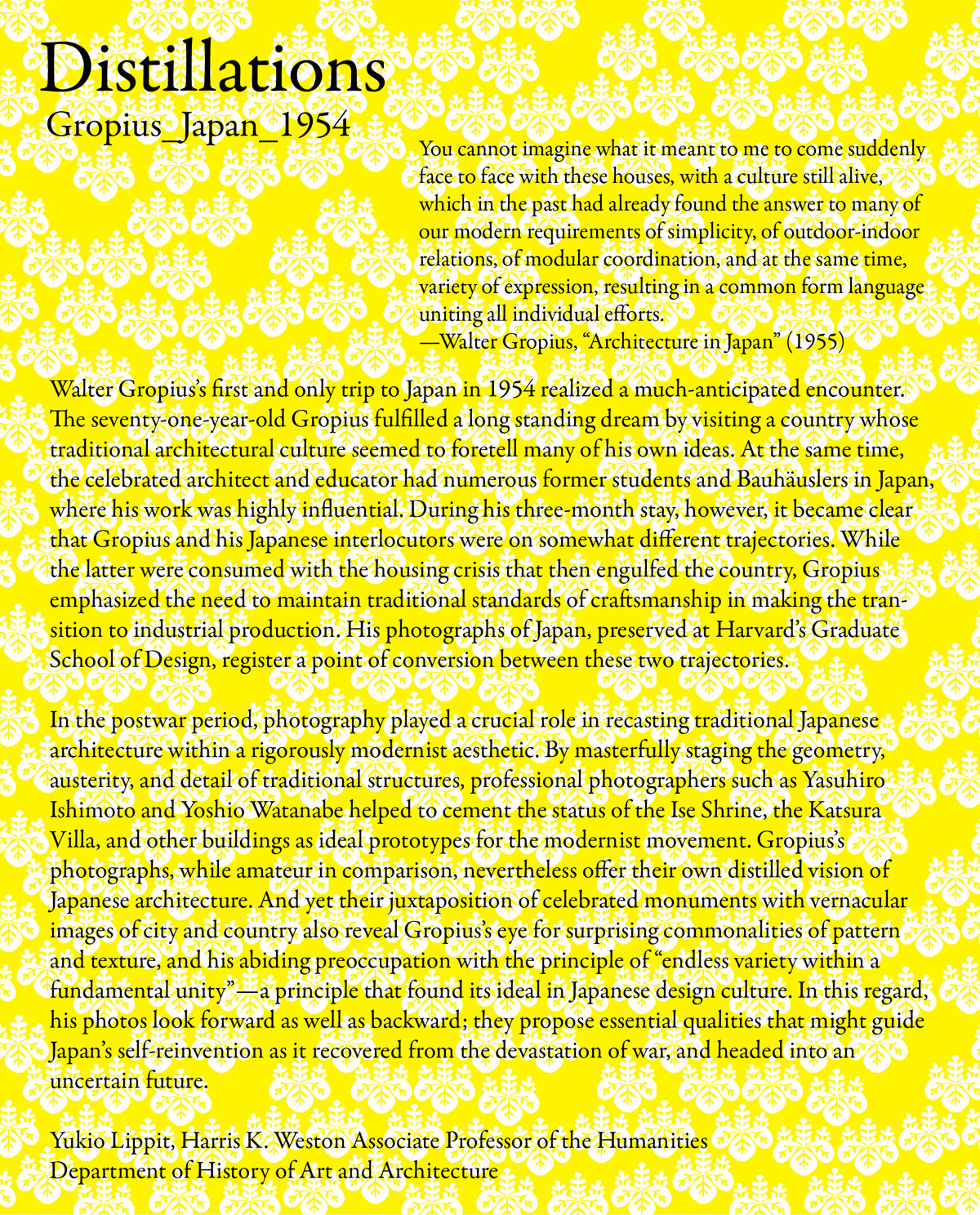Distillations: Gropius_Japan_1954

You cannot imagine what it meant to me to come suddenly face to face with these houses, with a culture still alive, which in the past had already found the answer to many of our modern requirements of simplicity, of outdoor-indoor relations, of modular coordination, and at the same time, variety of expression, resulting in a common form language uniting all individual efforts. — Walter Gropius, “Architecture in Japan” (1955)
Walter Gropius’s first and only trip to Japan in 1954 realized a much-anticipated encounter. The seventy-one-year-old Gropius fulfilled a long standing dream by visiting a country whose traditional architectural culture seemed to foretell many of his own ideas. At the same time, the celebrated architect and educator had numerous former students and Bauhauslers in Japan, where his work was highly influential. During his three-month stay, however, it became clear that Gropius and his Japanese interlocutors were on somewhat different trajectories. While the latter were consumed with the housing crisis that then engulfed the country, Gropius emphasized the need to maintain traditional standards of craftsmanship in making the transition to industrial production. His photographs of Japan, preserved at Harvard’s Graduate School of Design, register a point of conversion between these two trajectories.
In the postwar period, photography played a crucial role in recasting traditional Japanese architecture within a rigorously modernist aesthetic. By masterfully staging the geometry, austerity, and detail of traditional structures, professional photographers such as Yasuhiro Ishimoto and Yoshio Watanabe helped to cement the status of the Ise Shrine, the Katsura Villa, and other buildings as ideal prototypes for the modernist movement. Gropius’s photographs, while amateur in comparison, nevertheless offer their own distilled vision of Japanese architecture. And yet their juxtaposition of celebrated monuments with vernacular images of city and country also reveal Gropius’s eye for surprising commonalities of pattern and texture, and his abiding preoccupation with the principle of “endless variety within a fundamental unity”—a principle that found its ideal in Japanese design culture. In this regard, his photos look forward as well as backward; they propose essential qualities that might guide Japan’s self-reinvention as it recovered from the devastation of war, and headed into an uncertain future.
Yukio Lippit, Harris K. Weston Associate Professor of the Humanities, Department of History of Art and Architecture